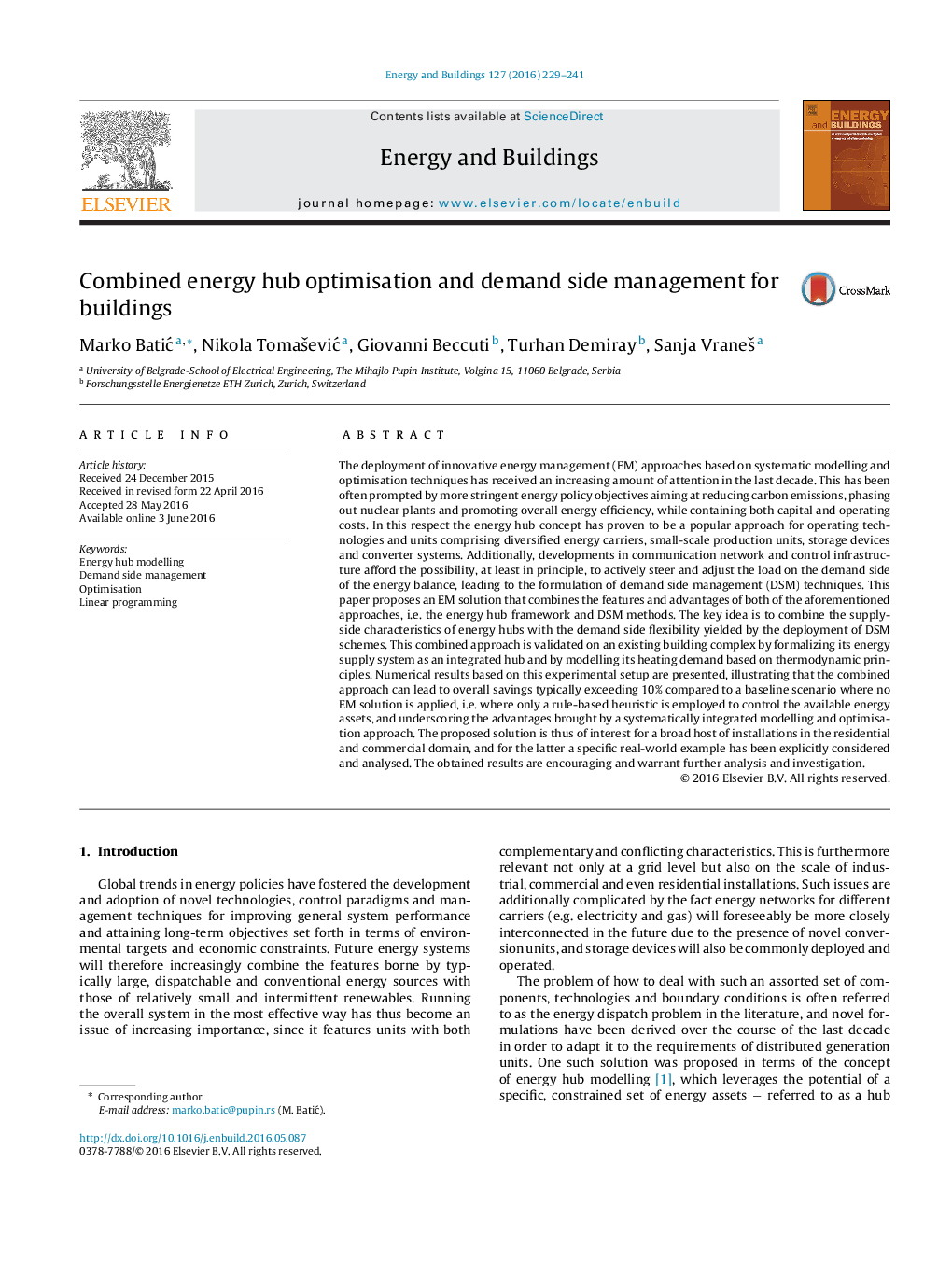| کد مقاله | کد نشریه | سال انتشار | مقاله انگلیسی | نسخه تمام متن |
|---|---|---|---|---|
| 261977 | 504007 | 2016 | 13 صفحه PDF | دانلود رایگان |
• Energy Management solution integrating energy supply and demand side optimization.
• Validation with measurements from an operating building.
• Overall cost savings typically exceeding 10%.
• Performance sensitivity analysis.
The deployment of innovative energy management (EM) approaches based on systematic modelling and optimisation techniques has received an increasing amount of attention in the last decade. This has been often prompted by more stringent energy policy objectives aiming at reducing carbon emissions, phasing out nuclear plants and promoting overall energy efficiency, while containing both capital and operating costs. In this respect the energy hub concept has proven to be a popular approach for operating technologies and units comprising diversified energy carriers, small-scale production units, storage devices and converter systems. Additionally, developments in communication network and control infrastructure afford the possibility, at least in principle, to actively steer and adjust the load on the demand side of the energy balance, leading to the formulation of demand side management (DSM) techniques. This paper proposes an EM solution that combines the features and advantages of both of the aforementioned approaches, i.e. the energy hub framework and DSM methods. The key idea is to combine the supply-side characteristics of energy hubs with the demand side flexibility yielded by the deployment of DSM schemes. This combined approach is validated on an existing building complex by formalizing its energy supply system as an integrated hub and by modelling its heating demand based on thermodynamic principles. Numerical results based on this experimental setup are presented, illustrating that the combined approach can lead to overall savings typically exceeding 10% compared to a baseline scenario where no EM solution is applied, i.e. where only a rule-based heuristic is employed to control the available energy assets, and underscoring the advantages brought by a systematically integrated modelling and optimisation approach. The proposed solution is thus of interest for a broad host of installations in the residential and commercial domain, and for the latter a specific real-world example has been explicitly considered and analysed. The obtained results are encouraging and warrant further analysis and investigation.
Journal: Energy and Buildings - Volume 127, 1 September 2016, Pages 229–241
